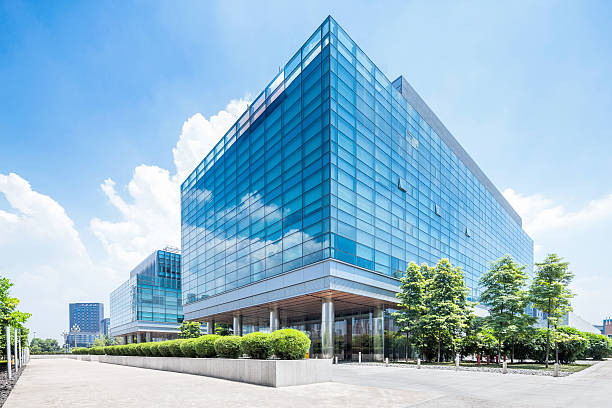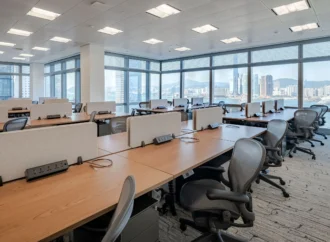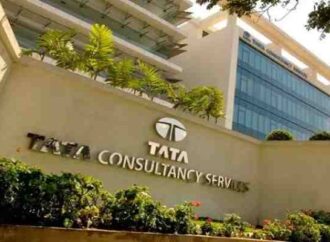Infrastructure planning drives India’s commercial real estate growth by enhancing connectivity, attracting investments, and boosting economic activity. Projects like the Mumbai Trans Harbour Link fuel demand for office spaces. Government initiatives like Gati Shakti and NIP streamline development, ensuring long-term sustainability and increasing property values across key business hubs.
Infrastructure planning is crucial in shaping commercial real estate by driving urban expansion and boosting economic activity. In India, where rapid urbanization and industrialization are transforming cities, strategic infrastructure development significantly impacts real estate trends. This article explores how well-planned infrastructure influences commercial real estate demand, focusing on key projects and their effects.
Understanding Commercial Real Estate
Commercial real estate (CRE) encompasses properties used for business operations, including office spaces, retail outlets, warehouses, and industrial facilities. The demand for CRE is closely tied to economic growth, infrastructure advancements, and evolving market dynamics. In India, ongoing urbanization and policy-driven reforms have propelled the sector’s expansion, prompting businesses to seek well-connected and strategically located properties.
Several factors shape the growth of commercial real estate, including transportation networks, digital infrastructure, and government initiatives such as Smart Cities and industrial corridors. Businesses prioritize locations with robust utilities, seamless connectivity, and access to a skilled workforce. As industries evolve, CRE must adapt by incorporating flexible office spaces and logistics hubs tailored to the needs of the e-commerce sector.
Latest Trends in Commercial Real Estate
As of early 2025, there has been a surge in demand for eco-friendly office spaces, primarily driven by Global Capability Centres (GCCs) and IT/ITeS companies. These sectors account for a significant share of net office leasing, with sustainability emerging as a key focus. This shift has resulted in nearly all Real Estate Investment Trust (REIT) assets receiving green certification, signalling a transformation toward sustainable commercial real estate investments.
The Interconnection Between Infrastructure and Commercial Real Estate
Infrastructure and commercial real estate share a mutually beneficial relationship, with each influencing the growth and value of the other. Well-designed infrastructure, including highways, metro systems, airports, and digital connectivity, enhances accessibility and attracts businesses, increasing demand for commercial spaces. In return, the development of commercial hubs stimulates economic growth, leading to further infrastructure investments to support expanding business districts.
Large-scale infrastructure projects such as dedicated freight corridors, metro rail expansions, and Smart City initiatives have reshaped commercial real estate patterns in India. Areas with superior connectivity and modern amenities attract corporate headquarters, retail establishments, and industrial complexes. This synergy underscores the importance of strategic infrastructure planning in ensuring long-term growth and sustainability for commercial real estate investments.
Key Infrastructure Projects Shaping India’s Commercial Real Estate
Mumbai Trans Harbour Link (MTHL)
The 21.8-km MTHL connects Mumbai and Navi Mumbai, cutting travel time to 20 minutes, and has positioned Navi Mumbai as a key commercial hub, with areas like Panvel, Ulwe, and Kharghar witnessing a 25% rise in property values since 2015. The upcoming Navi Mumbai International Airport further enhances its appeal for businesses.
Dwarka Expressway
In NCR, the Dwarka Expressway led to a 43% increase in under-construction property values in 2024. Its strategic location enhances connectivity to business districts and transport hubs, making it a sought-after location for corporate offices and commercial establishments.
Hyderabad’s Regional Ring Road (RRR)
The 340-km RRR improves connectivity across Hyderabad, boosting commercial activities. The western suburbs, responsible for 45% of real estate transactions and 56% of sales value, are set for further growth, attracting investments in IT parks, industrial zones, and commercial spaces.
Smart Cities Mission
This initiative was launched in 2015 and focuses on enhancing urban infrastructure across 100 cities through redevelopment and innovative solutions. With over 7,400 completed projects, the mission aims to improve mobility, housing, IT connectivity, and urban planning. Despite some delays, its significant impact on real estate drives demand for commercial spaces in well-developed urban areas.
Delhi-Mumbai Industrial Corridor (DMIC)
Spanning 1,504 km across six states, DMIC seeks to establish high-tech industrial cities with smart infrastructure. Key developments like the Dholera Special Investment Region and Shendra-Bidkin Industrial Area attract global investments, bolstering India’s manufacturing and trade sectors.
Infrastructure Planning and Its Impact on Commercial Real Estate
Tier-I Cities
Metro expansions and expressways in cities like Mumbai, Delhi, and Bengaluru improve connectivity, making peripheral locations attractive for businesses. Projects like the Mumbai Metro and Bengaluru’s Outer Ring Road have boosted commercial real estate demand, increasing property values and reducing congestion in urban cores.
Tier-II/III Cities
Infrastructure projects in cities like Jaipur, Indore, and Lucknow are transforming them into viable business hubs. Developments like the Lucknow Metro and Chennai-Bengaluru Industrial Corridor spur demand for office spaces and retail centres, supported by lower operational costs and government incentives.
Factors Driving Commercial Real Estate Demand
- Enhanced Accessibility: Improved transport networks attract businesses by ensuring efficient logistics and workforce mobility, increasing demand for commercial properties in well-connected areas.
- Economic Growth and Job Creation: Industrial corridors and technology parks generate employment, increasing the demand for office spaces and retail outlets.
- Development of Business Districts: Strategic infrastructure projects create new urban centres, reducing congestion in major cities while promoting balanced economic growth.
- Government Initiatives: Reforms like “Make in India” and “Digital India” improve infrastructure and regulatory frameworks, attracting real estate investments.
- Property Value Appreciation: Infrastructure development leads to higher property values, making commercial investments more lucrative.
- Technological Integration: Innovative office spaces and digital infrastructure are driving the evolution of commercial real estate, catering to modern business needs.
- Foreign Direct Investment (FDI) Growth: Relaxed policies have increased FDI, boosted commercial real estate, introduced global standards, and enhanced the sector’s professionalism and expansion.
Government Initiatives and Their Impact on Commercial Real Estate
India’s commercial real estate sector is closely linked to infrastructure development, with government policies playing a key role in shaping its growth. Several initiatives have been introduced to enhance connectivity, attract investments, and streamline project execution.
The Pradhan Mantri Gati Shakti Yojana, launched in 2021 with a budget of ₹100 lakh crore, focuses on a multimodal approach to infrastructure development. By improving coordination among ministries and expediting approvals, the initiative reduces inefficiencies and enhances logistics, driving demand for commercial real estate in key urban centres.
Similarly, the National Infrastructure Pipeline (NIP) provides a structured investment plan across energy, transportation, and urban development sectors. By offering a clear roadmap and diverse funding mechanisms, NIP encourages private sector participation, ultimately boosting the demand for office spaces, retail hubs, and industrial zones.
Conclusion
Projects like the Mumbai Trans Harbour Link, Dwarka Expressway, and Hyderabad’s Regional Ring Road demonstrate how improved infrastructure fosters real estate expansion. However, land acquisition delays and urban congestion must be addressed for sustainable growth. With strong policies like Gati Shakti and NIP, India continues to develop a real estate landscape driven by infrastructure advancements and economic expansion.























